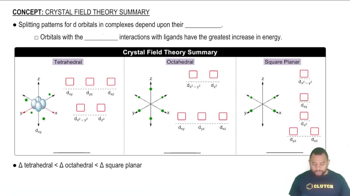Here are the essential concepts you must grasp in order to answer the question correctly.
Polarity
Polarity refers to the distribution of electrical charge over the atoms in a molecule. Polar molecules, like methyl alcohol (CH3OH), have a significant difference in electronegativity between their atoms, leading to a partial positive and negative charge. In contrast, nonpolar molecules, such as octane (C8H18), have an even distribution of charge. The miscibility of pentyl alcohol with octane can be attributed to its larger nonpolar hydrocarbon chain, which allows it to interact more favorably with octane.
Recommended video:
Hydrophobic and Hydrophilic Interactions
Hydrophobic interactions occur between nonpolar substances that do not mix well with water or polar solvents, while hydrophilic interactions occur between polar substances that can form hydrogen bonds with water. Pentyl alcohol, with its long hydrocarbon chain, exhibits both hydrophobic characteristics and a polar hydroxyl group, allowing it to interact with octane. Methyl alcohol, being more polar overall, cannot effectively interact with the nonpolar octane, leading to its insolubility.
Recommended video:
The greatest ligand-orbital interactions result in the greatest increase in energy.
Chain Length and Solubility
The length of a hydrocarbon chain significantly influences the solubility of alcohols in nonpolar solvents. Longer-chain alcohols, like pentyl alcohol, have a greater proportion of nonpolar character, which enhances their solubility in nonpolar solvents like octane. Conversely, shorter-chain alcohols, such as methyl alcohol, retain a higher polarity relative to their size, making them less compatible with nonpolar solvents and resulting in their insolubility in octane.
Recommended video:
 Verified step by step guidance
Verified step by step guidance

